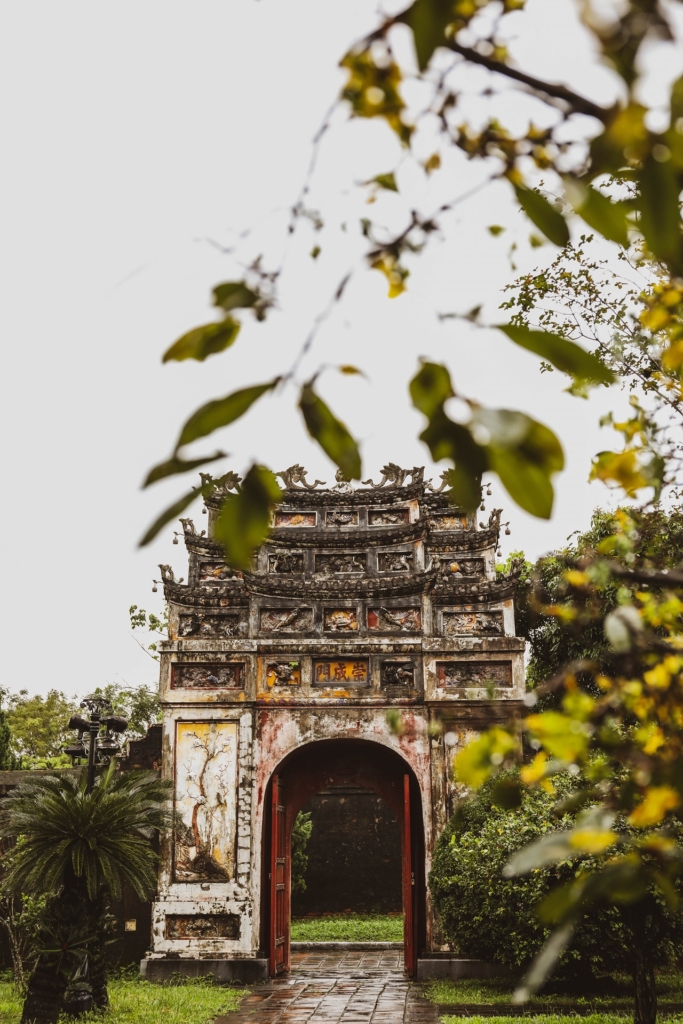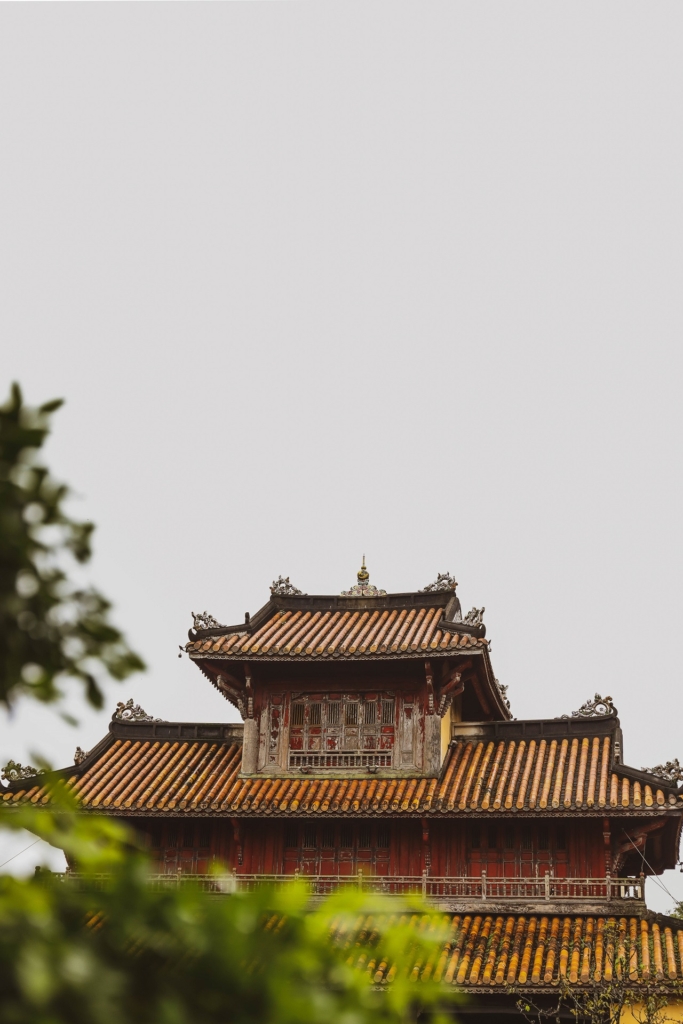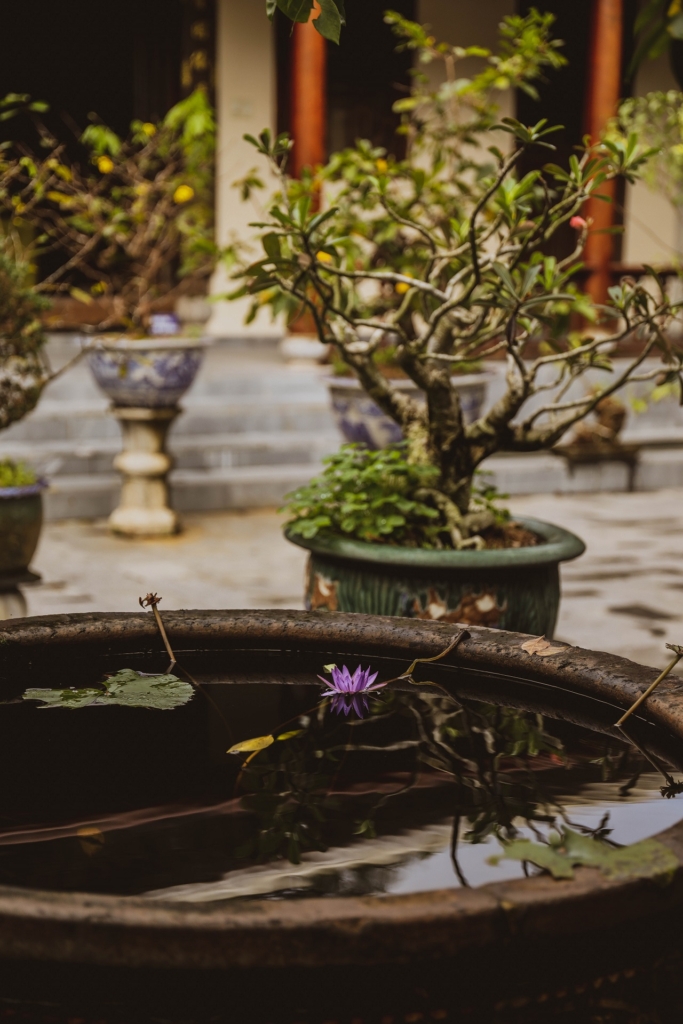The Autumn of the Emperor
While strolling through the ancient imperial city in Hue, we couldn’t shake the strange sensation of being transported to another time. It felt as if just around the corner, we would come face to face with an imperial guard ready to apprehend audacious strangers daring to step foot on palace grounds. In the past, only the emperor and members of his family were permitted to walk here. The drizzling rain and the near absence of tourists allowed us to embark on a true journey into the past and savor this incredibly fascinating legacy of the great Nguyen dynasty.




This imperial city is surrounded by mighty walls of an ancient citadel, two meters thick, and a wide moat on the outside. Much of this city was destroyed, but many buildings have been restored, retaining their historical charm. They are adorned with numerous fascinating details, mosaic ornaments, images, and sculptures adorning the roofs of structures and gates. The pervasive yellow hue of the walls truly captures the essence of an old era.


Emperor Gia Long was born 250 years ago and was the first emperor of the Nguyen dynasty, which marked the final imperial dynasty of Vietnam. The ancient imperial city in Hue served as the country’s capital in the past. It hosted all grand ceremonial events, such as coronations, receptions of foreign envoys, and royal birthdays. The imperial palace was a city within a city, surrounded by citadel walls, and only members of the emperor’s family and trusted servants were allowed entry. In 1993, the entire complex was inscribed on the UNESCO World Heritage List, recognizing its cultural significance.



It’s worth mentioning the imperial garden separately. Currently, it may appear somewhat neglected, but I must say that it only adds to its charm. Walking among overgrown pathways and through those abandoned spaces provides a unique aesthetic pleasure. The presence of towering trees, skillfully arranged landscapes, artificial ponds, and streams all blend harmoniously with the surrounding architecture.
